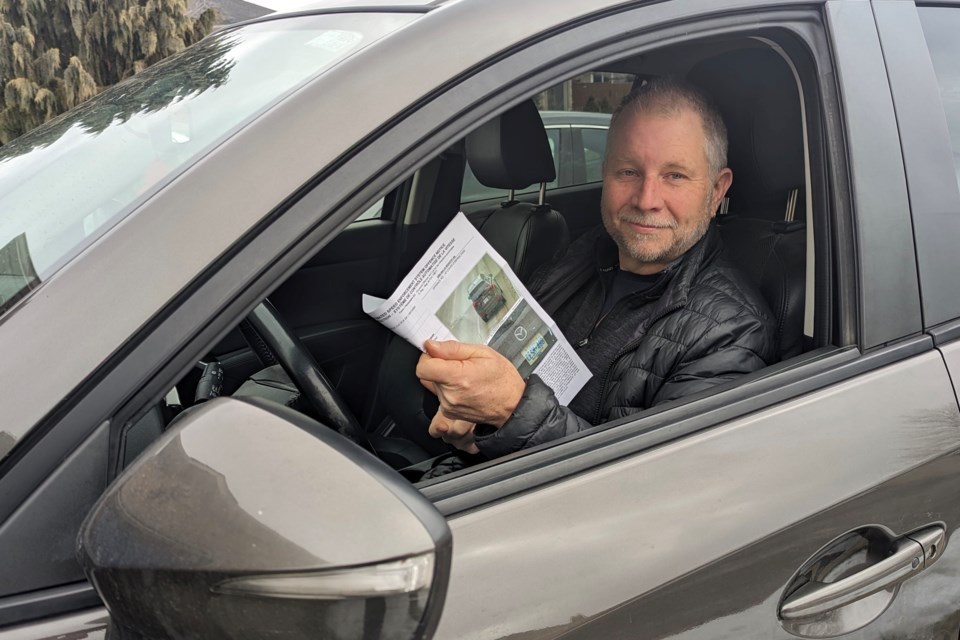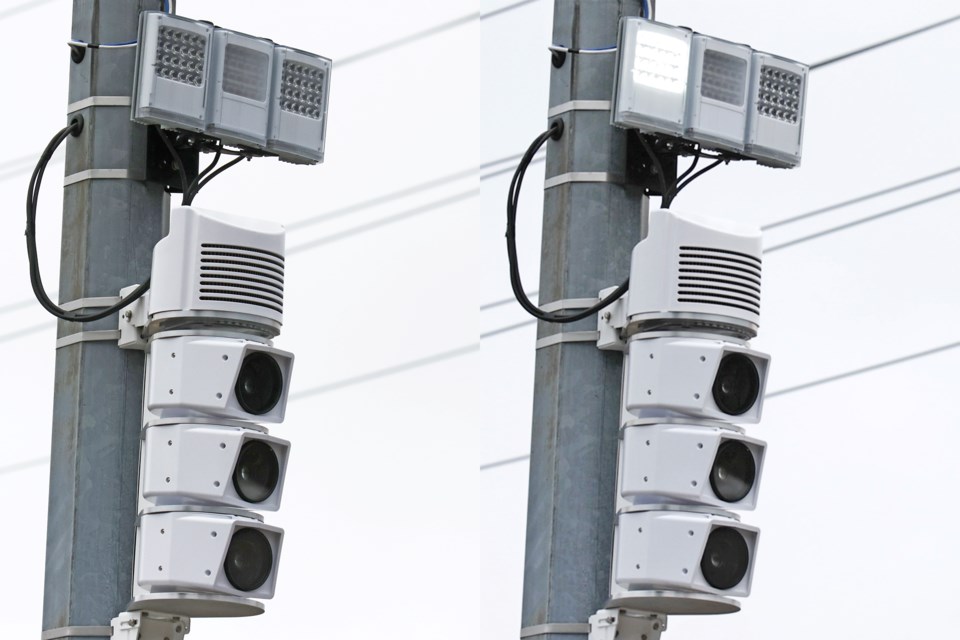Automated speed enforcement (ASE) cameras nailed 9,240 vehicles for speeding at two Barrie locations, with an average ticket fine of $90, during the program’s nearly first three months.
A city memo shows that from Dec. 1, 2023 until Feb. 18 this year, 4,563 speeding tickets were issued on Big Bay Point Road and 4,677 on Anne Street North.
Speeding fines totalling $463,065 have been paid to date.
Barrie resident Peter Heal got an $80 ticket when an ASE camera caught him travelling 52 kilometres an hour in a reduced 40-km/h zone on Anne Street North on Jan. 4.
“No doubt people drive too fast in a lot of spots in the city,” he said. “I see no reason why ASE cameras shouldn’t be installed in some areas, but let’s just make sure the objective is to improve the safety of the neighbourhood in which they are being used, and not for a revenue generator.

“Installing the camera on Anne (Street North) was more of a means of raising money quickly than as a deterrent for anyone speeding," Heal added.
The city memo also says cameras in both locations have been successful in significantly reduced speeding there when compared to the use of flashing 40-km/h beacons. During peak school hours, speeds were reduced by 12 km/h at the Big Bay Point Road location and 13 km/h at the Anne Street location, according to the city. This reduction is compared to speeds during peak school hours when the flashing 40-km/h beacons were in use.
Gord MacBain, who is also from Barrie, isn’t completely convinced.
“I honestly think that the flashing yellow lights are still the safest option,” he said. “It’s difficult to read the signs and keep your eyes on the road whereas the lights immediately warn you that it’s a school zone.
“I think that the best option would be flashing yellow lights and cameras. That would seem to me to be the fairest choice,” MacBain added. “If you’re still over the limit after the lights then you definitely deserve a ticket. I also think that the revenue would be great for other automated traffic control such as red-light cameras, which would bring in additional revenue.”
Flashing lights to warn of a 40-km/h zone remain deactivated in the ASE zones because Ontario law requires the flashing beacons, which are normally in place, not be active when a sign has been installed indicating the times of the 40-km/h speed limit.
ASE is a system that uses a camera and a speed-measuring device to detect and capture images of the licence plates of vehicles travelling faster than the posted speed limit in school or community safety zones.
Barrie’s ASE cameras were located eastbound on Big Bay Point Road near Willow Landing and St. Michael the Archangel Catholic elementary schools, and southbound on Anne Street North near Portage View and Nouvelle-Alliance schools.
Near the end of February, the ASE cameras were moved to northbound Essa Road near Timothy Christian School, and westbound Ardagh Road in the vicinity of Heritage Baptist Church.
There is a significant difference between the tickets issued and the number of violations recorded at Barrie’s first two ASE cameras locations. Tickets for violations have only been issued if they occurred between 7 a.m. and 5 p.m., Monday to Friday, the prime period when vulnerable members of the community may be impacted by speeding, and due to limited available resources to process violations.
The number of tickets actually issued relates to whether the image captured is of adequate quality to issue a ticket, such as licence plates obscured by weather and/or just illegible.
On Big Bay Point Road, for example, 58,258 speed violations were recorded, along with 35,674 on Anne Street North, from 7 a.m. until 5 p.m., Monday to Friday.
Available personnel to review images was also a factor. There are two Provincial Offences officers processing charges related to ASE, with a third officer awaiting designation by the province. The current volume of violation images per day and per officer substantially exceeds what the existing resources can process.
Based on the rates of speed exceeding the maximum speed limit during the first several months of operation at the first two locations, the average ASE fine amount payable per ticket is approximately $90, according to the city.
This is the same cost as an average ticket issued by police officers for the same violation, but an ASE violation does not include the loss of demerit points or a record on a driver’s licence. The ticket is issued to the owner of the vehicle, not whoever is behind the wheel.
Similar to when tickets are issued by a police officer, many owners of vehicles who have been issued ASE violations have chosen to pay their fines. However, a portion of the defendants are requesting trials through the Provincial Offences Act (POA) court system.
As with regular tickets, there is a difference between the legislated payment period when a fine is to be paid and when the next steps take place to move the infraction to vehicle plate denial.
The city says $463,065 in gross fines have been paid into the court to date, which represents more than 50 per cent of the total fines. Court and operating expenses would be subtracted from this amount.
A total of 7,577 ASE charges have been filed with the courts, according to the city.
ASE fines go into Provincial Offences Court revenues for the municipality where fines are laid and are treated no differently than the charges that would be laid by a police service.
The city has said ASE speeding tickets will arrive within 30 days after the violation occurs.
Barrie’s cameras are being rotated through different community safety zones every few months, and there are plenty of choices. The city has 27 community safety zones. They are established by municipal councils through a bylaw, and cover road areas where there is a higher risk to, or concern for, drivers, pedestrians, cyclists and/or others who share the space.
Barrie has 81 sections of road designated as community safety zones in accordance with the community safety zones bylaw.
Bradford West Gwillimbury (BWG) Coun. Ben Verkaik has said he thinks ASE cameras are a good thing.
“People need to change their driving habits in these areas near schools and parks and drive safely,” he said, noting BWG will have four ASE cameras in operation beginning this May 1.
“Hopefully we will see drivers take better care in these areas of special concern,” Verkaik said of community safety zones.
Barrie’s ASE camera equipment cost $100,000 and yearly operating costs are $370,000, staff have said. The fines will cover a portion of the ASE program’s costs.
Local Authority Services (LAS), the business services arm of the Association of Municipalities of Ontario (AMO), and the city signed an agreement last summer that LAS will initially fund two provincial offences officers who will process speed-camera violations in Barrie.
